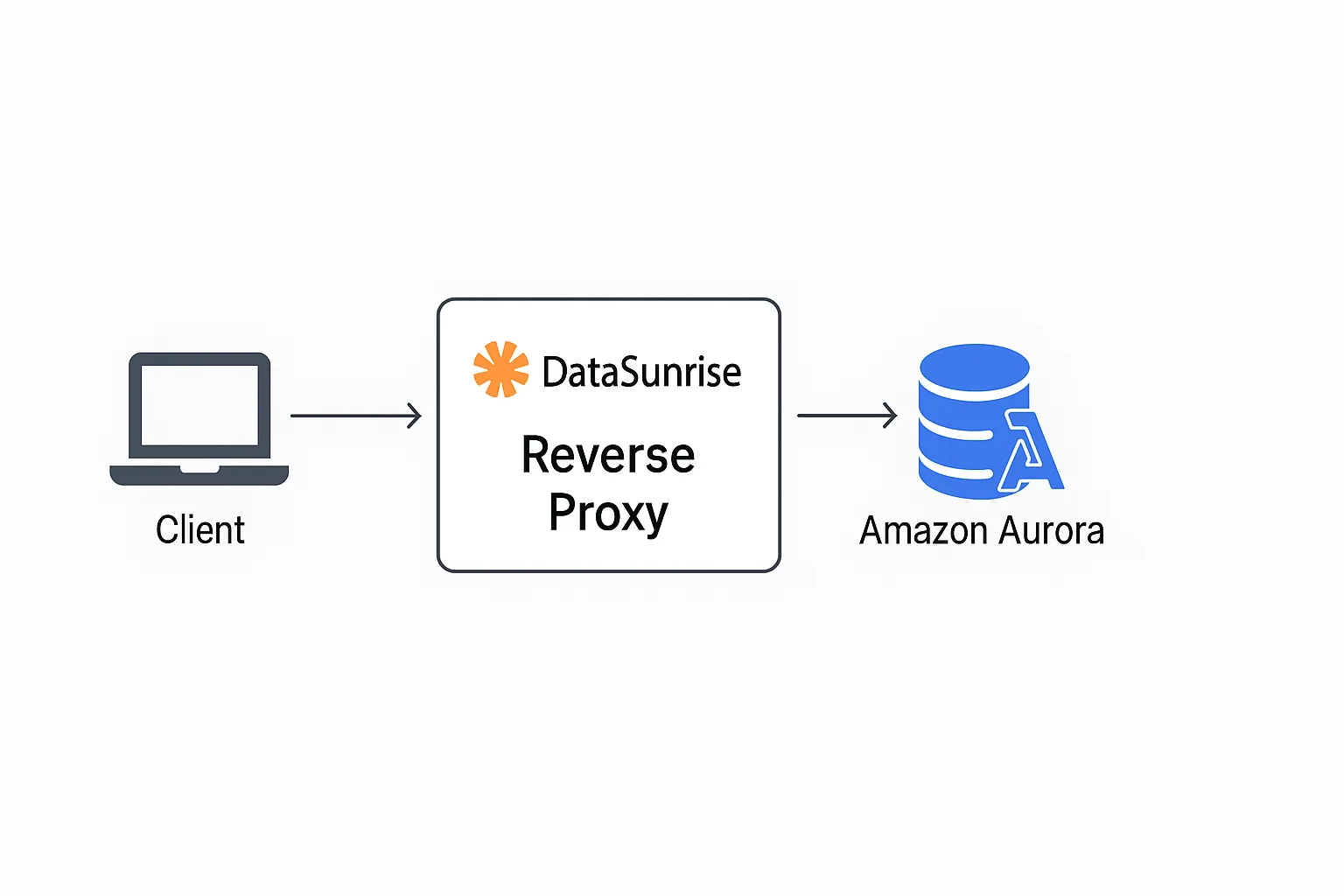What Is Amazon Aurora MySQL Audit Trail
Amazon Aurora is a high-performance, MySQL-compatible database engine. It combines the speed of commercial databases with the simplicity of open-source MySQL. For teams handling sensitive data, maintaining a reliable audit trail is essential for tracking activity and spotting suspicious behavior. This article covers what Amazon Aurora MySQL audit trail is, how native auditing works, and how to enhance it with DataSunrise.
To meet compliance regulations like GDPR, HIPAA, and PCI DSS, proper logging is mandatory. Aurora supports built-in auditing tools to help teams stay accountable.
For details, see the official Aurora MySQL auditing guide.
Native Aurora MySQL Audit Capabilities
Amazon Aurora supports the MariaDB Audit Plugin, which tracks login attempts, queries, and schema changes. To enable it, activate the SERVER_AUDIT plugin and set parameters like server_audit_events and server_audit_logging.
Logs are stored on the instance and can be accessed via CloudWatch or the RDS console. Make sure to manage log retention and rotation policies manually.
See more in the Amazon audit plugin guide.

Avoid exposing sensitive values in logs. Use masking, as described in Amazon’s data masking guide.
For large audit volumes, see audit storage best practices.
What Is Amazon Aurora MySQL Native Audit Trail for Compliance?
Native audit logs help trace access to sensitive data, including personal and financial details. They show who accessed what, and when.
The audit trail can include schema changes, failed logins, and DDL statements. This supports your audit goals and compliance efforts.
To debug Aurora MySQL, use Amazon’s troubleshooting log guide.
For a complete view of activity trends, use data activity history tools alongside native logs.
Enhancing Aurora Audit Trail with DataSunrise
Native auditing is a good start, but DataSunrise adds more depth. It captures traffic in real-time without touching your database. You gain dynamic rules and detailed reports.
To set it up:
- Deploy DataSunrise in the same VPC as your Aurora instance.
- Use reverse proxy mode to route traffic.
- Set Aurora credentials in the DataSunrise UI.
- Create audit rules for queries, DDL changes, and failed logins: Audit Rules Guide.

Once active, you can:
- Use adaptive audit learning to define intelligent rules.
- Set audit policies per user to protect sensitive data.
- Enable real-time alerts for critical events.

DataSunrise stores logs in a searchable archive. Its automated reports simplify compliance reviews.
For high-volume environments, review audit storage tuning tips.
Final Thoughts
You can request a trial or contact the team to schedule a demo. Or check out the live demo to see audit, masking, and compliance in action.
Explore related resources:
With the right tools, you can make Aurora secure, auditable, and compliant.
